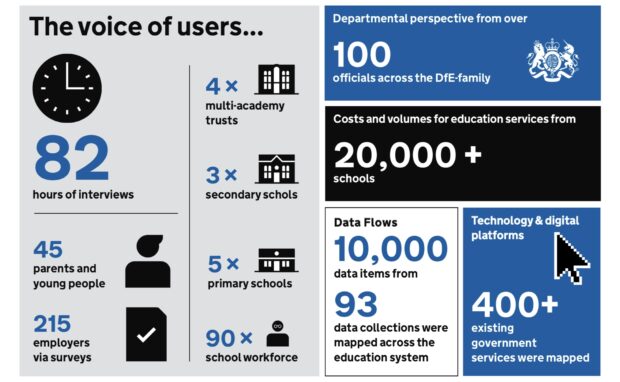
Hello. My name’s Dan and I’m a service designer at the Department for Education (DfE). I led the schools discovery – one of two initial discoveries kicked off by Mark O'Neill, Chief Digital and Technology Officer, when he arrived at the DfE.
The challenge for our discovery was: how do we effectively and efficiently deliver DfE services to schools? We needed to do our research in a geographical area that would contain a typical mix of schools and give us a good indication of what might be happening across the country.
Why Hastings?
Hastings was the area we were assigned to look at. It’s an opportunity area – one of 12 places in England which the DfE has identified as needing more investment. These areas have been selected because they are social mobility 'cold spots'. This is measured by both the 2016 Social Mobility Commission's index and the DfE's data on school standards and capacity to improve.
Success stories
Despite these issues, we found a really energetic and enabled leadership dedicated to children’s needs. We found teachers who would go above and beyond what was expected of them to create a safe, caring and nurturing environment for those children – teachers who would work extra hours to help families apply for free school meals.
We found many success stories – such as one school’s status turning from ‘needs improvement’ to one of the top 10% of schools in the country. And we found a massive reliance on the use of data.
Data collection
We’d presumed that schools were collecting data because the government was asking for it. It turned out this data collection was all part of schools’ own tracking of their progress. The reality is, they’re collecting far more data than they share with us. The problem comes from the disconnect between the data schools collect and what the government asks for. We’ve not adapted our system to evolve with schools’ needs.
Our objectives
As we started the discovery, we set ourselves three goals:
- Map the public services terrain that is typical for a school in Hastings - we put the school in the middle of the map and asked: who are the people who need to interact with this school? How complex is this picture?
- Understand the nature and make-up of the schools workforce, and the challenges they face in the current system.
- From that, identify opportunities for digital transformation.
Emerging themes
From our work, we’ve identified key themes and within each theme, a set of user needs. Now we’re in the process of organising these into ‘service lines’ around the needs of our identified user groups, to understand where collections of services come together to meet the user's goal.
We’ve prioritised a handful of discoveries to look at in the next few months. These include:
- How people become teachers: becoming a teacher, and staying and developing as a teacher is a continuum. We need to look at the whole journey to see how we can improve things.
- Making it simpler for teachers to find new jobs: a teacher vacancies service was a promise in the government's election manifesto. We're looking at the best way to build a service that will be free for schools to list vacancies, and make it easier to teachers to find their next role.
- Understanding grant funding for schools in need: this is a pre-discovery looking at how funding allocation can be improved. The solutions won't necessarily all be digital. We'll blog about this in more detail in the next few weeks.
- Better financial reporting: when data is aggregated and simplified, we lose the definition of detail, so ultimately the data doesn’t give a true picture - it only tells half the story. We're looking at ways in which schools report on their finances, and how that data is used.
We'll be blogging our progress here at DfE Digital. Don't miss a post! Sign up to email alerts or subscribe to our RSS feed. You can also follow us on Twitter @DfEDigital.
1 comment
Comment by Catherine Gilhooly posted on
Great blog. Look forward to hearing more.